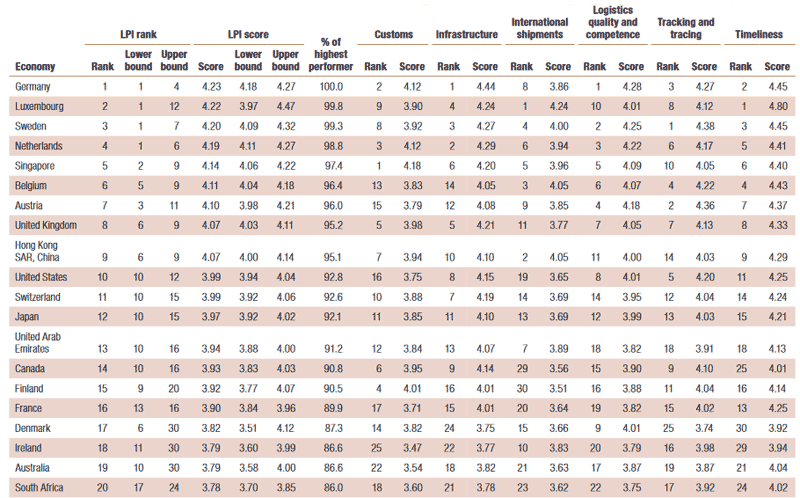Supply Chain News: What Countries are Tops in Logistics?
Every couple of years, the folks at the World Bank (which is headquartered in Washington DC, if you didn’t know) put out a report analyzing the logistics competencies of most nation’s across the globe – 160 of them this year, the same as in the last report issue D in 2014.
The 2016 report was released in late June. For whatever reason, the excellent report does not receive much press coverage in the US, though I am happy to say Sc Digest summarizes each edition.
• The efficiency of customs and border clearance (“Customs”). So we will do that again here for the 2016 report, the fifth such effort. And let’s just agree that it is good the big thinkers and high rollers at the World Bank recognize logistics is a critical element of a country’s competitiveness.
The report notes, for example, that “Efficient logistics connects firms to domestic and international markets through reliable supply chain networks,” adding that “Conversely, countries characterized by low logistics performance face high costs, not merely because of transportation costs but also because of unreliable supply chains, a major handicap in integrating and competing in global value chains.”
We all know that, but it’s good to see the World Bank say it too.
The core of the report is a ranking of those 160 nations from top to bottom based on what is called the Logistics Performance Index (LPI), based on a combination of six different attributes. This year, Germany remains the top spot, while Luxembourg moves from number 8 to number 2. The US fell from the 9 spot in 2014 to number 10 this year.
Somalia, Haiti and Syria took the bottom three spots, only because North Korea was not included in the rankings. Not quite sure how ISIS figured in the Syrian score.
The six attributes that go into the LPI are as follows:
• The quality of trade and transport infrastructure (“infrastructure”).
• The ease of arranging competitively priced shipments (“Ease of arranging shipments”).
• The competence and quality of logistics services – trucking, forwarding, and customs brokerage (“Quality of logistics services”).
• The ability to track and trace consignments (“Tracking and tracing”)
.
• The frequency with which shipments reach consignees within scheduled or expected delivery times (“Timeliness”).
In the end, using some standard statistical methods, every country included in the Index is given a score between 1 and 160 for each attribute, with that score ultimately translated to a number between 0 and 5 (to two decimal places), which are then averaged to produce a final score.
How does the World Bank acquire such data? The results are obtained from an elaborate survey of freight forwarders worldwide, which seems like a reasonable approach to me. The surveying is quite sophisticated, with respondents rating logistics competence in their own countries and then also a limited number of other countries they know best.
The survey is also conducted in two phases, with results from the first phase used to target respondents for the second phase to get enough data for the results to be significant for each country.
So, below you will find a chart of the top 20 nations in the 2016 report, showing not only the ranking from 1 to 20 but also the component scores for each of the six attributes.
Top 20 Countries for 2016 LPI with Individual Attribute Scores

